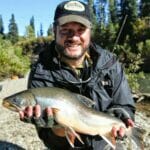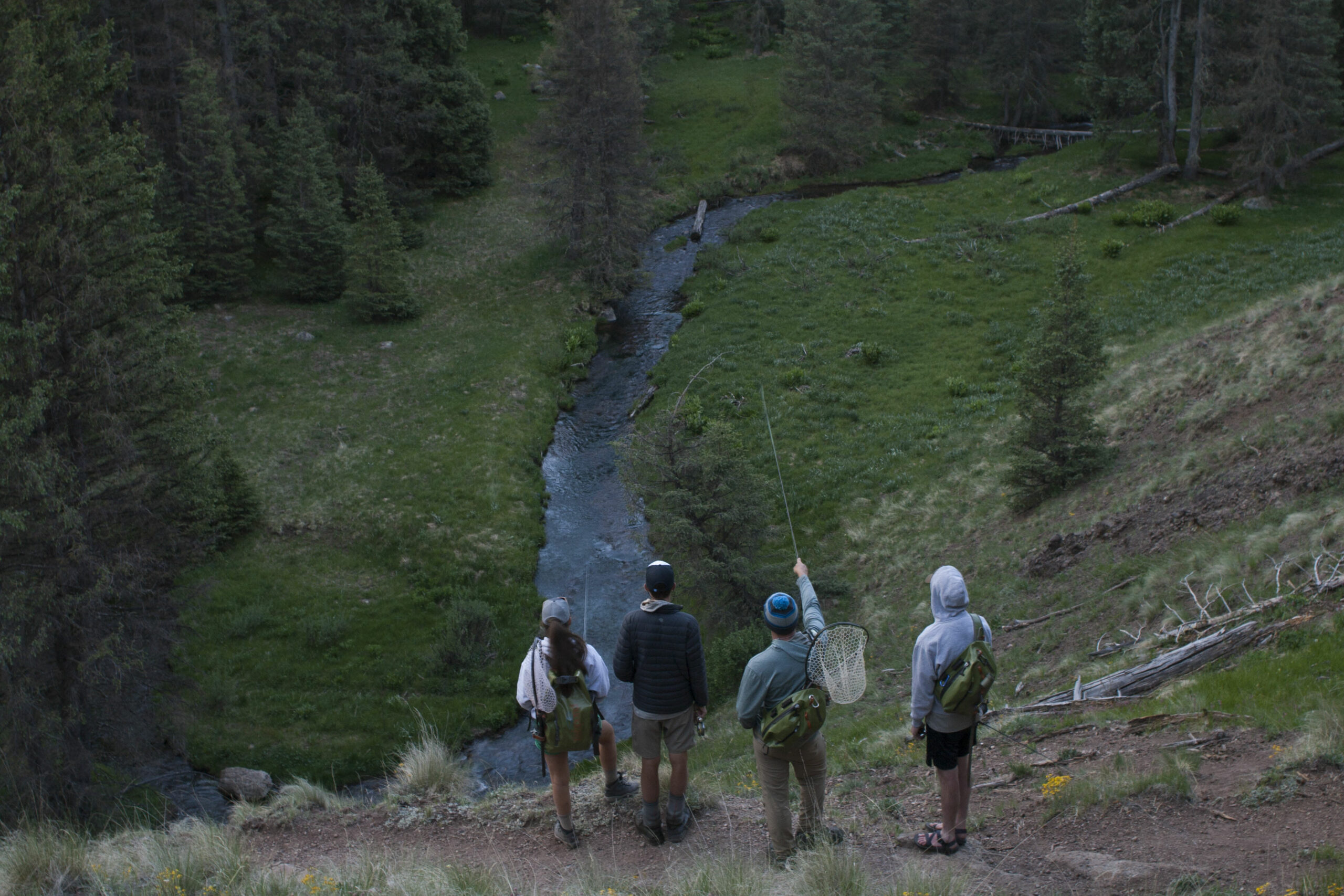Editor’s Note: Five students from the TU Costa 5 Rivers Outreach Program have embarked on a once-in a-lifetime journey in pursuit of 16 native trout species, all on public lands. With support from the U.S. Forest Service, Costa Sunglasses, Simms Fishing Products, Fishpond and Post Fly Box, these students will tell the stories of our native trout, the places they live, and the local economies they fuel.
By Team Native Odyssey
Blog Post 2: Arizona
Public Land: Mt. Baldy Wilderness Area, Apache National Forest
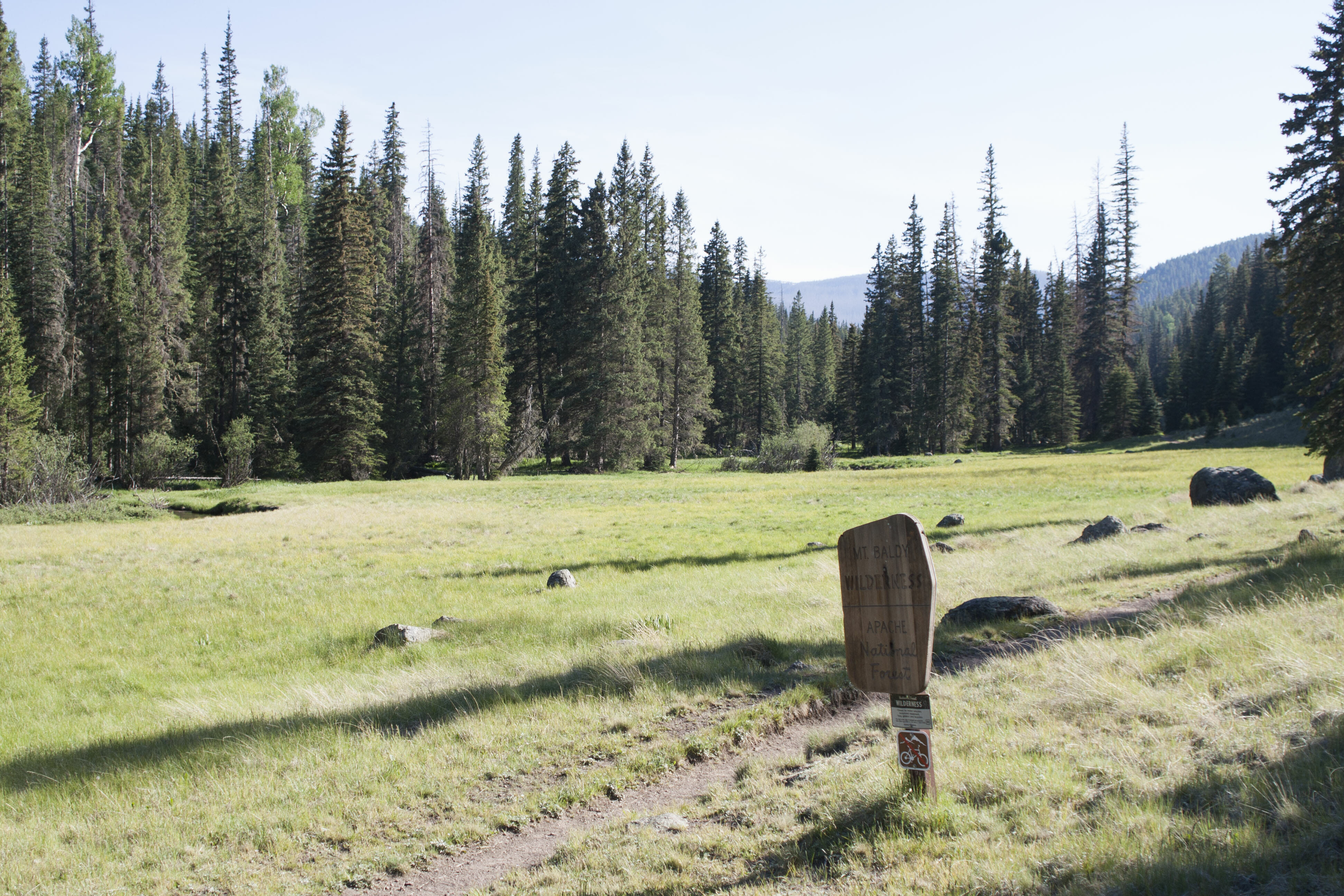 Entering the Mt. Baldy Wilderness Area.
Entering the Mt. Baldy Wilderness Area.
The Mt. Baldy Wilderness, in the Apache National Forest, is easily accessed at the Sheep’s Xing parking lot. From there, hikers, campers, and fishermen alike can follow the Little Colorado River that parallels the main trail. As one gradually climbs higher in elevation, beautiful meadows break up the mountainous terrain. Paper Birch trees stick out like sore thumbs against the dense Ponderosa Pine forest. There are many backcountry campsites just off of the trail, and it is not hard to find a spot protected by tree cover right beside the stream. This wilderness area is teeming with wildlife, and elk can be seen in large numbers throughout the forest. Native to Arizona, Apache trout thrive in the high elevation water that the Little Colorado River provides.
– Matt Crockett
Native Fish: Apache Trout
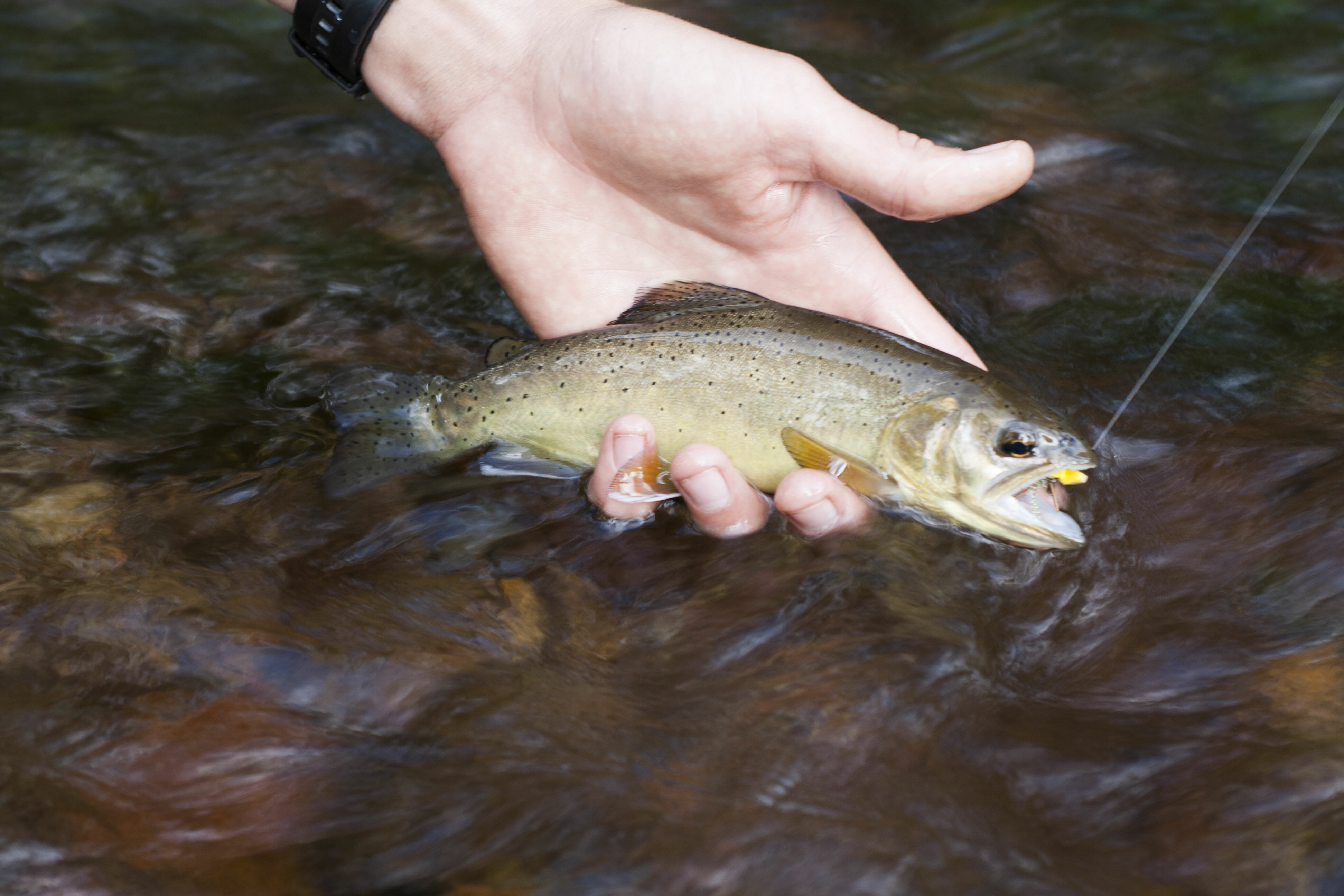
Brett fooled this Apache trout with a large hopper pattern.
Three native trout species call the American Southwest home. One of these species is the Apache trout. Formerly referred to as “yellow bellies,” these trout are only found in the White Mountains of eastern-central Arizona, very close to the New Mexico border. More specifically, these trout only inhabit the headwaters of the Little Colorado and Salt Rivers, where small pools, undercuts, and fallen pines provide ample hiding and feeding areas. In the late 1800s and early 1900s, settlers of the area could reportedly bag one to two hundred fish on a good afternoon. However, fishing for Apache trout has become a lot more challenging as of late, due to a decrease in suitable habitat. Habitat degradation of the “yellow bellies” can mainly be attributed to timber harvest, livestock grazing, road construction, water diversions, dams and the introduction of non-native trout species. Currently, there are approximately 28 populations of Apache trout in 170 miles of habitat, compared to the 680 miles of their historical range.
Apache trout mostly inhabit isolated headwater streams, and they have become very susceptible to the warming climate along with its byproducts. Wild fires are one of the biggest dangers to Apache trout populations, as a large wildfire may contaminate clean water with excessive amounts of sediment. Additionally, recent years of severe drought have caused once fertile waters to run low. Snow-packs that were already low have recently dwindled, causing farmers and ranchers to divert any water they can to supply their thirsty crops.
Habitat recovery efforts, and proper hatchery practices, provide hope for the species. The use of fish barriers downstream of known Apache trout habitat create a refuge where non-native trout species are barred from entering and taking valuable resources. These barriers provide a relatively simple solution to the issue of non-native species encroaching on Apache trout habitat.
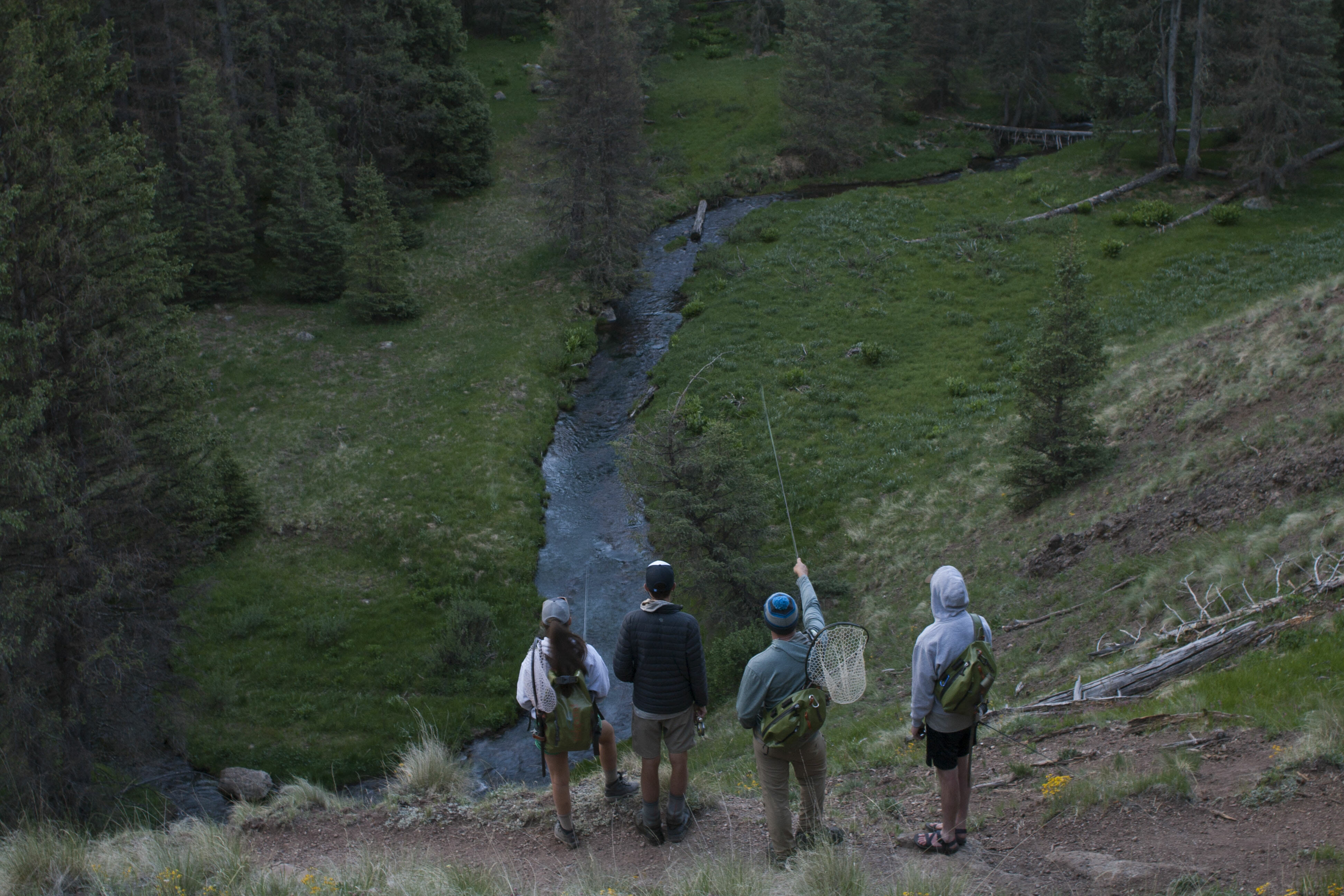
Looking down at the Little Colorado River from the trail above.
I have come to three major conclusions during our Apache trout pursuit. Adjusting to the finesse of trout fishing is much harder than I expected, trout are the most beautiful fish I have ever encountered, and boys smell stinky.
We have spent the past four days pursuing Apache Trout in the Mount Baldy Wilderness Area, located in Arizona. Previous to this experience, the extent to my fly fishing has been with heavy tackle in saltwater settings. Transitioning to this meticulous, stealthy, and quiet form of fishing is everything my loud clumsy self struggles with in life. Thankfully, the boys have made for great mentors as I explore this new and exciting style of fishing. I learned everything from the difference between a dry fly and a nymph, to bow and arrow casting.
Our team fished a small and breathtaking river called the Little Colorado. My initial cast of the trip, I stripped out a bunch of fly line to my feet, preparing to double haul. Everyone laughed at me. I quickly learned that high-sticking is an essential practice in small rivers, that are loaded with structure along the bank. Over the next few days the group found success using dry flies and dry-dropper rigs. An assortment of Apache trout were caught ranging from small to smaller. Each fish glowed beautifully with their golden tones.
In the final hour of the final day I found success. I crept my way forward to a deep run that formed a cut bank, as the rest of the crew watched with anticipation. I cast my dry-dropper up stream and patiently watched as it flowed down the river. Boom! The moment we had all been waiting for had finally arrived. My dry fly submerged under water indicating that a trout had snatched my nymph and the fish was on! My first wild trout is in the books, and hopefully there are many more to come during our journey.
– Heather Harkavy


